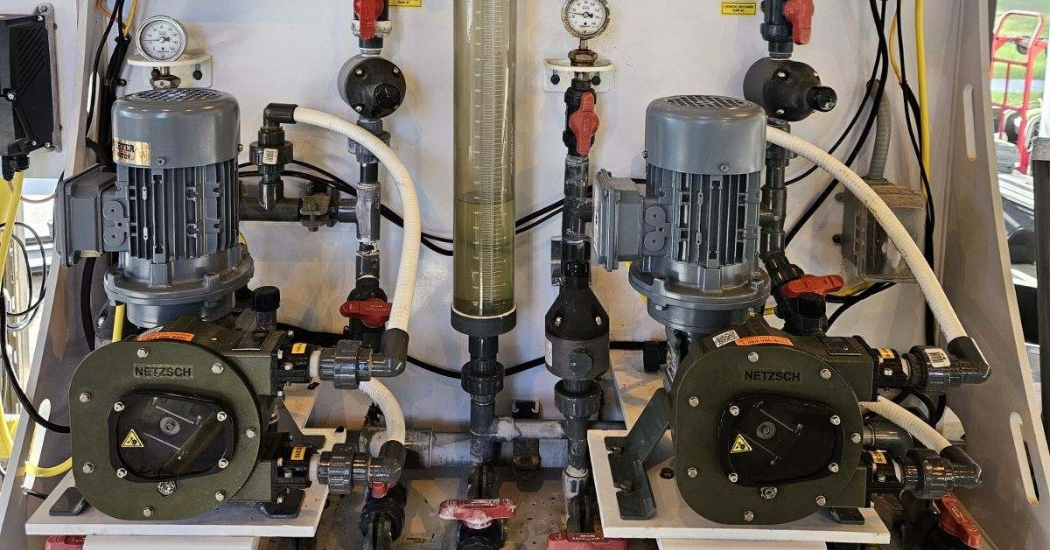Sodium hypochlorite (NaOCl) is widely used by municipal water treatment plants
Sodium hypochlorite (NaOCl) is an effective water disinfectant to treat the raw, filtered water before distribution. But sodium hypochlorite can be an unstable solution when exposed to heat and light, that needs to be stored in tightly closed containers and kept in a cool place away from direct sunlight. Otherwise elevated temperatures will cause it to decompose or “off gas” creating gaseous oxygen (O2) that builds up gas bubbles in the chemical metering feed system.
A common metering feed pump technology used to meter the sodium hypochlorite is Electrically Operated Double Diaphragm (EODD) pumps that can precisely inject the volume of chemical the system requires. However, EODD pumps are very prone to vapor locking when gas bubbles build up in the feed system, causing them to bind and stop pumping the sodium hypochlorite. To fix these situations, the EODD pumps must be manually vented to release the built up gases, so the EODD pumps can begin pumping again. This manual venting process can occur as many as several times a month during warmer periods of the year, requiring plant personnel to be on hand each time or even make a special visit to the treatment station if after hours, to vent the EODD pump and get it back online.
The required labor cost to manually vent the EODD pumps can be significant over the course of a year, adding up to several thousand dollars per pump. There’s also additional pump maintenance parts and maintenance labor costs as well, adding well over another thousand dollars per pump, per year of expense. All totaled, the EODD pump’s annual operation and maintenance cost can be in excess of $3,600 per pump, per year. The following calculations provide typical EODD expenses in this service.
